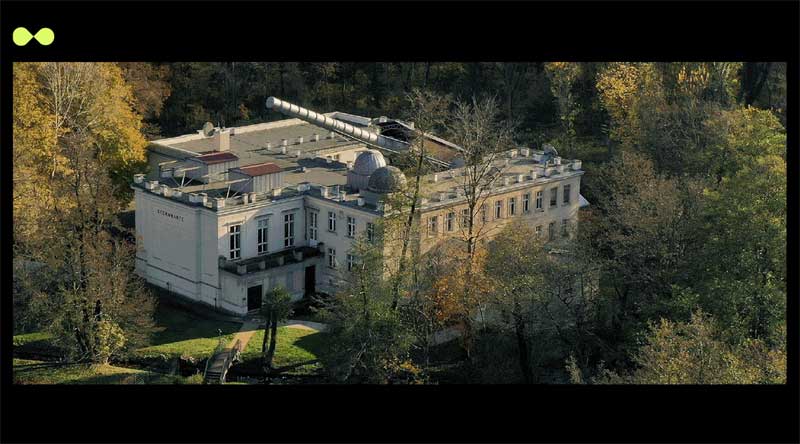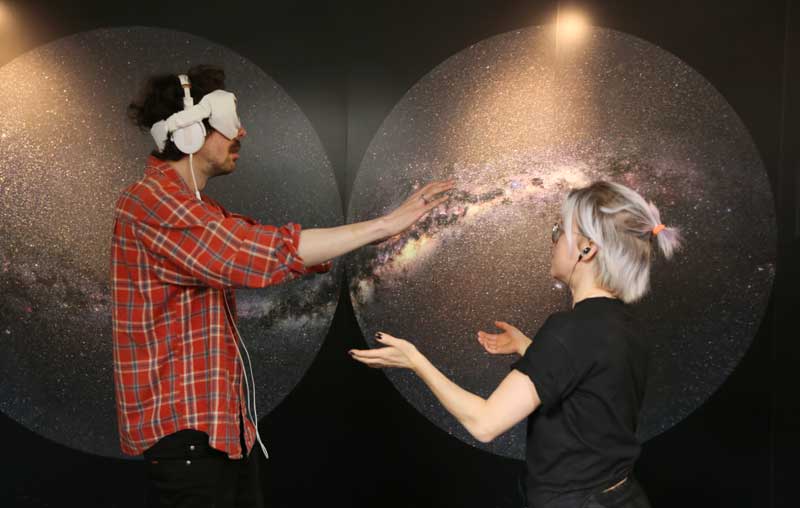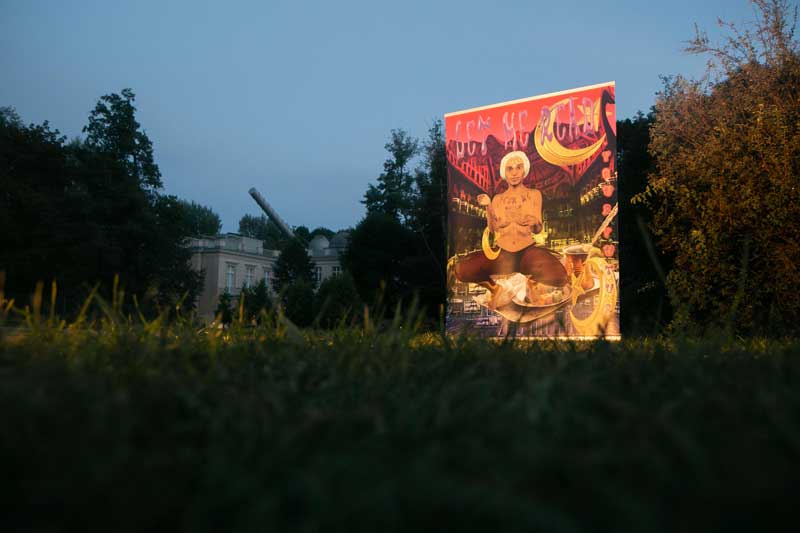by Julian Kosicki-Slawinski // Oct. 14, 2022
The first chapter of the usually Norway-based Screen City Biennial (SCB), titled ‘Other Minds,’ makes its Berlin debut in the Archenhold Observatory, as well as a number accompanying venues in the city. With a series of lens- and time-based artworks, including newly commissioned performances, it questions the arbitrary division between human and nature. As a conceptual structure, this divide has roots in the Enlightenment but its consequences reach to the present day. As a result, the earth has often been seen and treated as a mere source of natural resources, with the idea of the natural environment as “living” being rejected. Curated by Daniela Arriado and Vanina Saracino, ‘Other Minds’ seeks to undo this harmful legacy. This year the biennial explores the symbiotic relationships between the human mind, nature, and technology, and most importantly, the states of consciousness that arise from their interaction. Integrating the exhibition within the permanent display at the observatory prompts a dialogue between two narratives—that of humans as the observers of space and humans as beings whose existence does not just end at their fingertips, but extends beyond the body into space itself.

Achenhold Observatory // Photo by Volker Gehrmann
Entering the observatory one immediately encounters ‘Symphony of a Missing Room — STERNWARTE’ (2022) by artist couple Lundahl & Seitl, a site-specific readaptation of their piece ‘Symphony of a Missing Room’ (2009-ongoing). The work leads the viewer into a world where the lines between humans and everything else are blurred. Goggles covered with a white silkscreen are put over the visitor’s eyes causing the other senses to be immediately heightened when an automated voice begins to speak through the headphones. It dares the now blind “viewer” to stretch out their hand, to make contact with another being’s hand as it narrates the journey. Complete submission and trust are expected, thus creating a dependent relationship on the technology in the exhibition. As light sears through the goggles, the voice explains that the light reaching our retinas took millions of light years to arrive, thus linking us to the far reaches of the cosmos. The hand gently leads one through the exhibition space, ending at an ancient meteorite, part of the observatory’s permanent exhibition. There, the visitor is asked to reach out and touch. Lundahl & Seitl also present a VR piece in collaboration with ScanLAB projects titled ‘Eternal Return: The Memor’ (2019-2022). Instead of being blinded by googles, this time a computer-generated voice greets one with a hyper-visually stimulating “virtual fossil,” where matter and time become contorted. The viewer is placed in an infinite gridded landscape where floating particles materialize that then take the shape of different objects. Throughout the experience, memory is portrayed as a vessel through which, as written in the curatorial statement, “a string of matter is passed on through time.” Experiencing the two pieces can bring on the feeling of “ego death”—the process of losing subjective self-identity.

Lundahl & Seitl: ‘Symphony of a Missing Room – STERNWARTE,’ 2022, installation view at the Screen City Biennial, 2022 // Photo by Vladymirovna
The newly commissioned piece ‘Capture’ (2022) by research and design studio Metahaven interweaves footage from CERN (the European Organization for Nuclear Research) with footage of lichen in Norwegian forests. CERN is credited with discovering the Higgs Boson particle, which forms the foundation for all matter, and lichen is an organism that scientists have struggled to classify because it is an amalgam of multiple organisms. It thus falls into various categories: algae, fungi and cyanobacteria. The video, housed in the Einstein Hall (the place where Einstein held his first public lecture on the theory of relativity in Berlin), is a 40-minute long exploration of the entanglements between human, matter and technology that does not fail to humble the viewer. Although humans have discovered the Higgs Boson particle, common organisms such as lichen remain mysterious and unclassifiable.
In the three-channel video installation titled ‘I’ve always demanded more from the sunset’ (2022) by artist Eli Cortiñas, an AI voice warns us about humanity’s brutal nature and tendency towards killing, while showing accelerated footage of mushrooms growing. As mentioned by curator Vanina Saracino, a deliberate decision was made not to black out the windows of the room so as to create a connection between the mushrooms growing in the video and the ones growing right outside. The entanglement of the exhibition with the Archenhold Observatory and even the nature outside is the strength of the overall curation of the biennial. It goes beyond the white cube to explore other spaces of matter and alternative knowledge.

Anna Ehrenstein & 4DHD: ‘Coffee Ground Imaginaries,’ 2022, AR experience accessed through QR codes printed on banners and stickers, 30’’ each video, 1-hour walk // Photo by Vladymirovna
Outside, visitors can stroll through ‘Coffee Ground Imaginaries’ (2022), a planned walk winding past a series of banners and stickers by Anna Ehrenstein and the artist duo 4DHD. Each piece contains a QR code that triggers an augmented reality landscape wherein a sage rises from coffee grounds and reads a fortune from the patterns they create. Perhaps the most illuminating aspect of the piece is that it brings attention to a particularly dark history that took place just outside the observatory. The walk ends at the Karpfenteich, a man-made lake built as a human zoo for the people enslaved and brought to Germany from its colonial time. After many years of activism, it is recognized with just a brief infographic.
SCB does not shy away from engaging the colonial legacy of the observatory and its surrounding environment and even attempts to combat it through art pieces that aim to dismantle hierarchies. The biennial raised many important questions, such as what would happen if we were to recognize the vitality of “other minds” and thus open the door to ontological pluralities? What would happen if we were to challenge the idea that matter is inactive and lifeless? Our existence is made up of a web of complex interrelationships of which we have only touched the surface.
Exhibition Info
Archenhold Observatory and other venues
Screen City Biennial: ‘Other Minds’
Exhibition: Sept. 23–Oct. 20, 2022
Admission: € 15 (reduced € 8)
2022.screencitybiennial.org
Alt-Treptow 1, 12435 Berlin, click here for map






















